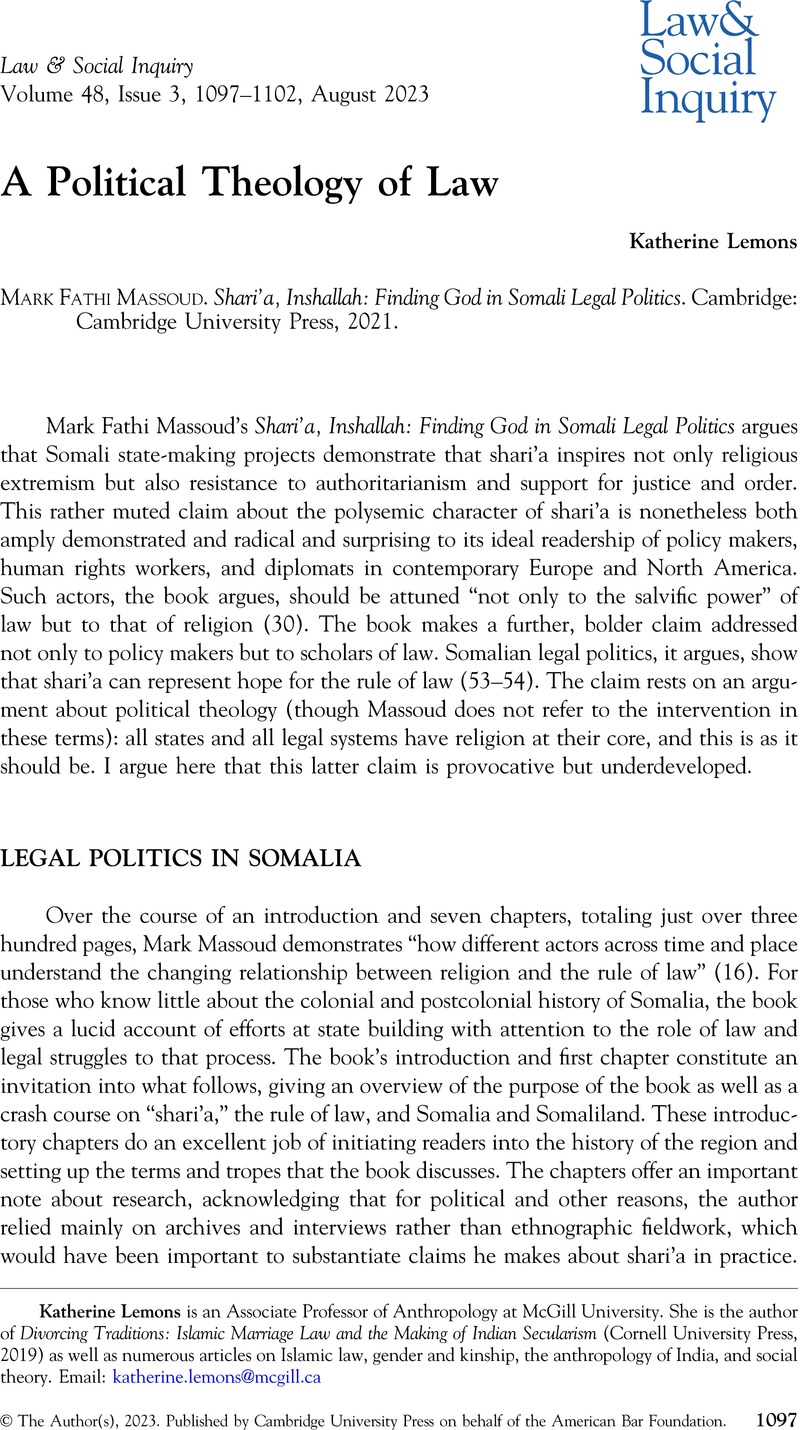No CrossRef data available.
Published online by Cambridge University Press: 24 April 2023

She is the author of Divorcing Traditions: Islamic Marriage Law and the Making of Indian Secularism (Cornell University Press, 2019) as well as numerous articles on Islamic law, gender and kinship, the anthropology of India, and social theory.